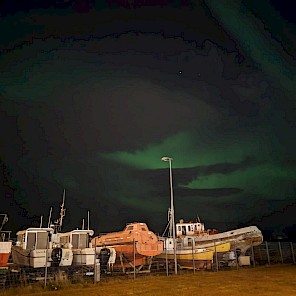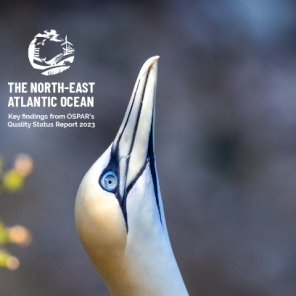| | OSPAR is expanding its network of Marine Protected Areas (MPA)
OSPAR's 2023 Quality Status Report concluded that the 2003 OSPAR Recommendation to establish an ecologically coherent and well managed network of MPAs has catalysed an expansion of its network. By October of 2021, the OSPAR Network of MPAs numbered 583, including eight collectively designated in Areas Beyond National Jurisdiction (ABNJ). Overall, the MPAs have a total surface area of 1 468 053 km2, covering 10,8% of the OSPAR Maritime Area. In all, 88% of the OSPAR MPAs have either full or partial management information in place. By designating more than 10% of marine and coastal waters as MPAs, OSPAR has achieved the spatial coverage component of Aichi Biodiversity target 11 of the United Nations Convention on Biological Diversity (CBD) and also Sustainable Development Goal 14, target 14.5, to conserve at least 10 per cent of coastal and marine areas by 2020. OSPAR is identifying barriers to the effective management of MPAs, and by 2024 will take steps to address them appropriately to enable all OSPAR MPAs to achieve their conservation objectives. Protected areas offer protection for the benthic habitats listed by OSPAR as being of particular concern, as well as threatened marine bird, mammal and turtle species. While OSPAR is progressing towards key metrics in terms of area-based protection, there are still gaps in geographic coverage (particularly in the OSPAR Arctic Waters Region) and in ecological coherence. OSPAR nonetheless stands committed to achieving the target of 30% MPA coverage by 2030 and will continue to work towards effective management of an eco-coherent network, as put forward in NEAES 2030 of 2021 and the CBD’s Kunming-Montreal Global Biodiversity Framework of 2022.
The QSR 2023 is the most authoritative assessment of the whole North-East Atlantic and reflects the collective work of the 16 Contracting Parties to the OSPAR Convention, scientists, experts and their institutions, and the OSPAR Secretariat. It assesses the status of various components of the North-East Atlantic and examines how conditions have changed and provides a foundation for effective science-based policy.
We hope you enjoy this newsletter. Please do contact us with any comments at [email protected] | |  | | Meeting of OSPAR's group on MPAs in Iceland this week | OSPAR's group on MPAs (ICG-MPA), which took place from 7-9 November, was treated to a show of the Northern Lights in Reykjavík (Iceland). The packed agenda included discussions on the latest MPA Status Report, including statistics, eco-coherence and management status. The meeting also discussed national experiences on the implementation of fisheries management measures, and the conflict between offshore wind developments and conservation of marine biodiversity. A report of the meeting will be made available on the OSPAR website in due course. |
| |  | | QSR 2023 key findings report | OSPAR produced a key findings report to accompany the QSR. The report features the headline messages from the QSR 2023 along with links to the underlying assessments. |  READ MORE
READ MORE |
|
|
| | |
|